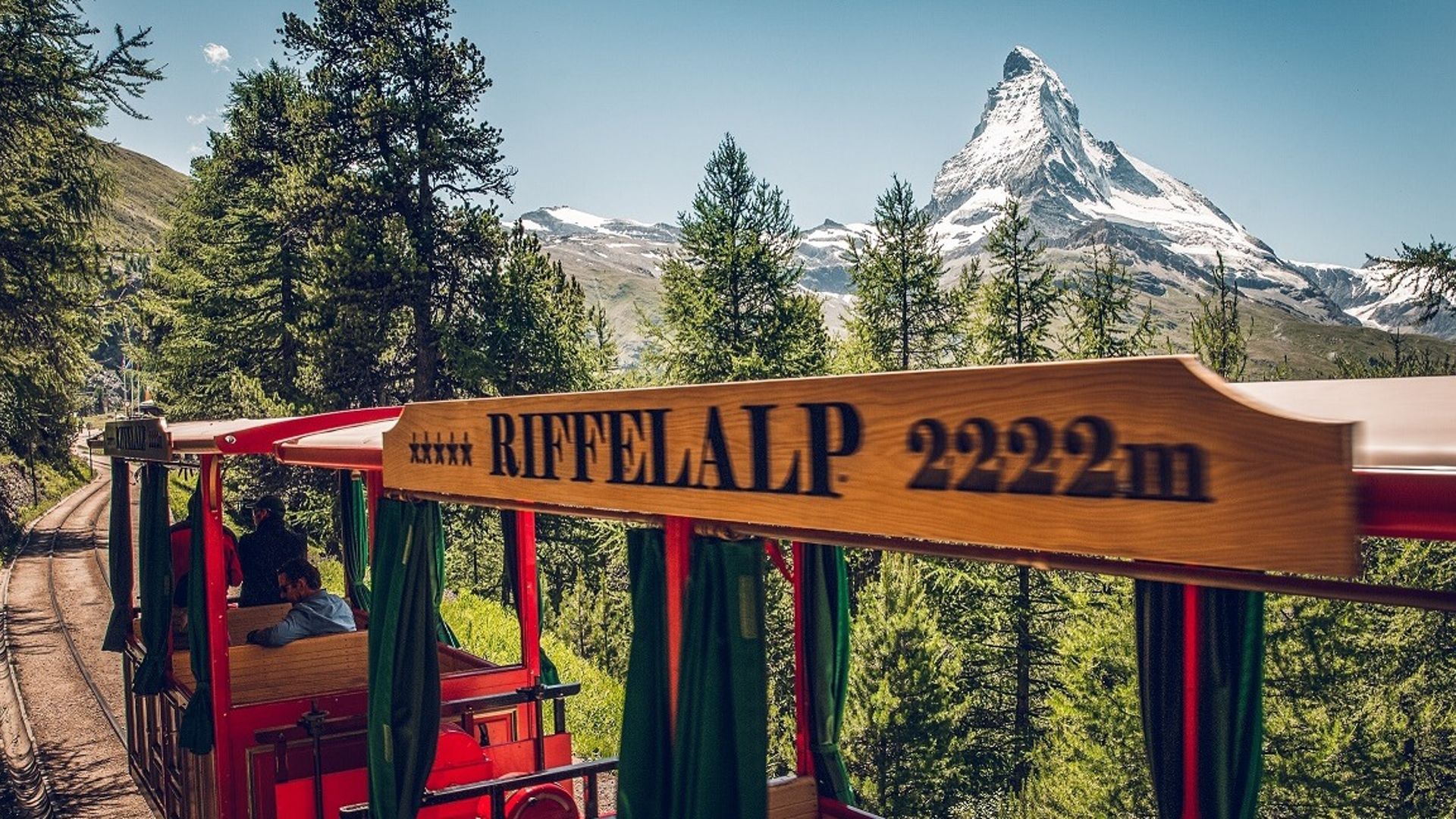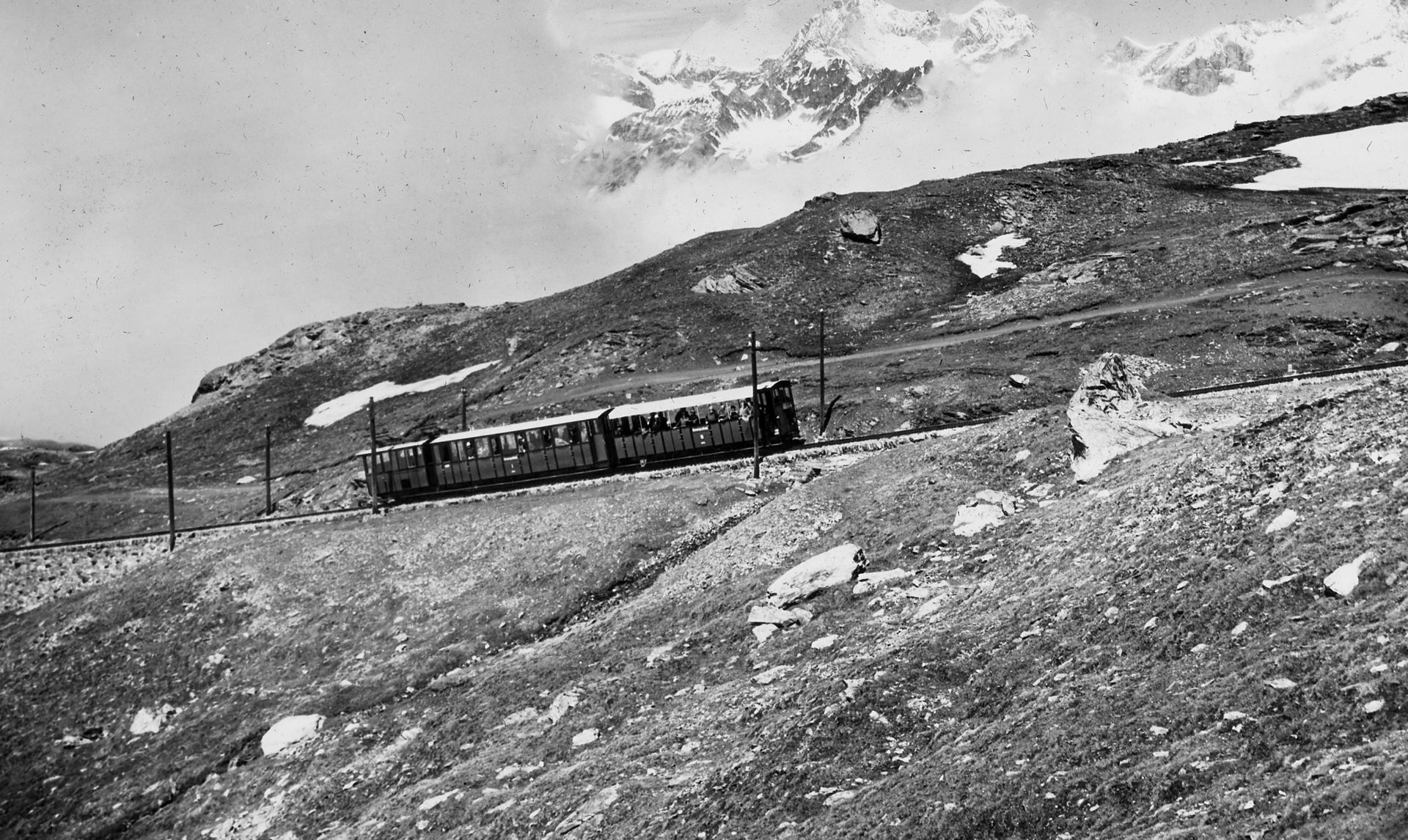The Riffelalp tram: the highest tramway in Europe
Story 80
In 1899, the hoteliers of the Hotel Riffelalp built a tramway to ensure transfers between the Gornergrat Railway and the hotel. Europe’s highest tramway is still in use today.
A tram for guest comfort
In the summer of 1884, Zermatt tourism pioneer Alexander Seiler opened the Hotel Riffelalp – a full twelve years before the Gornergrat Railway (GGB) began operating. When planning the Gornergrat Railway, Seiler advocated the construction of a railway station next to the hotel. The topography and the resulting optimum line management did not allow this to happen.
Riffelalp Railway Station was finally built around half a kilometre from the hotel. This prompted solution-oriented Seiler to apply for a licence for an electric tram in order to guarantee guests convenient access to the hotel.
Highest tramway in Europe
In the summer of 1898, Seiler received the concession and immediately ordered the construction of an electric tram with a track width of 80 centimetres. July 1899 saw the ceremonial opening of what is probably Europe’s shortest and at the same time highest tramway at 468 metres in length (terminus at 2,222 metres). The tram was equipped with two passenger cars and had an overhead contact line, for which the Gornergrat Railway supplied the electricity. Since the hotel was only open in summer, the tramcars only ran during the snow-free season.
An accident with consequences
From 1961 onwards, the Seiler family wanted to open the hotel in winter. But during the installation work to make it suitable for winter, the hotel burned down completely. As a result, tram services were discontinued. The tramcars, which were no longer needed, were exhibited in the garden of the Mont Cervin Palace Hotel between 1986 and 1999 as a tourist attraction.
Battery-powered restart
When the new five-star hotel Riffelalp Resort 2222 was built in 2001, there were plenty of discussions about resuming the tram service. But time had left its mark on the tramcars. According to investigations by the Gornergrat Railway, repairing the original tramcars would be too costly.
To ensure there could still be nostalgic tram rides, the construction of two battery-powered railcars was commissioned. For test runs with the new chassis, what was then Brig-Visp-Zermatt Railway constructed a test track with a gauge of 80 cm in Visp. The tramcars were built and commissioned in the workshops of the Gornergrat Railway in Zermatt. Today, the tram once again runs during the opening hours of the hotel in summer.


